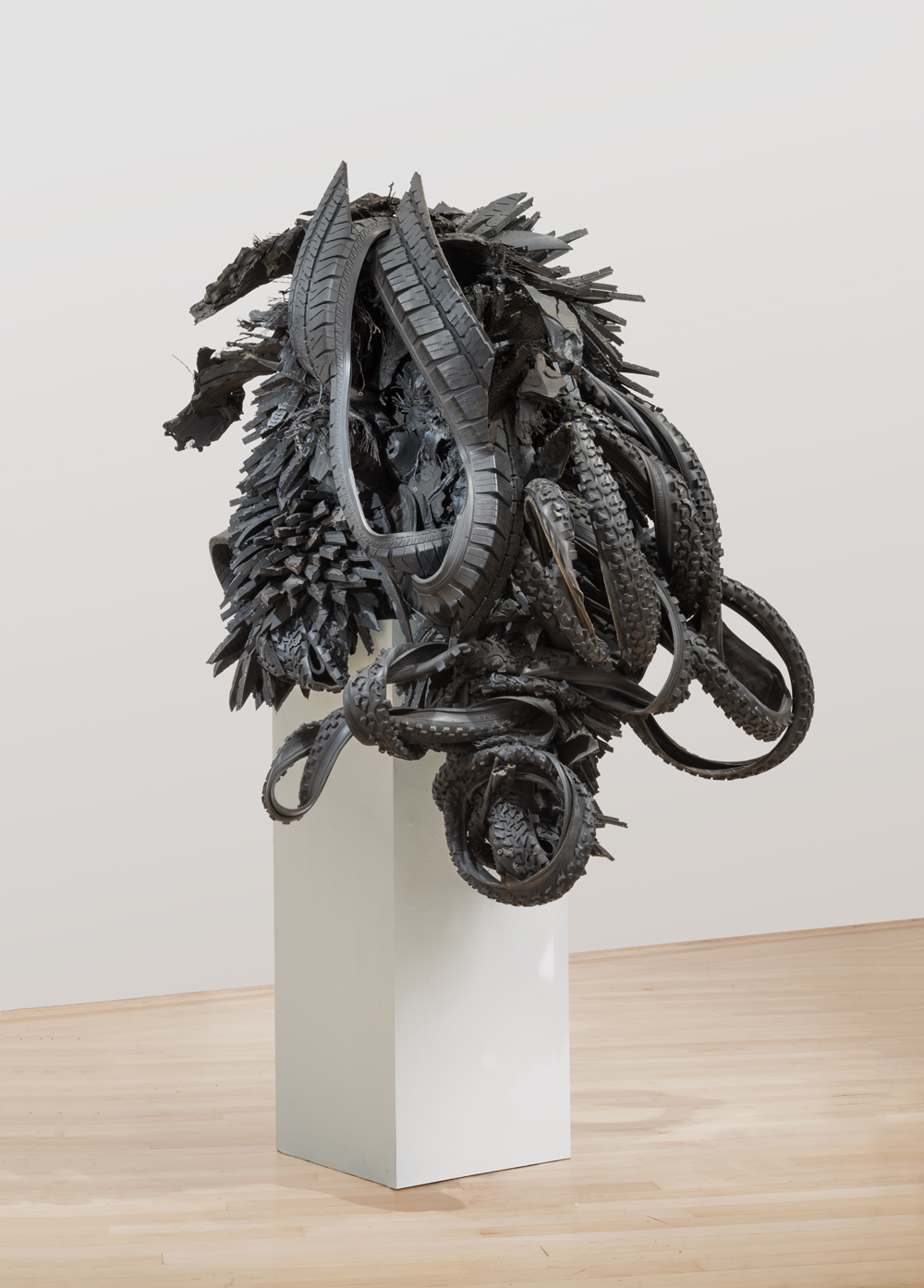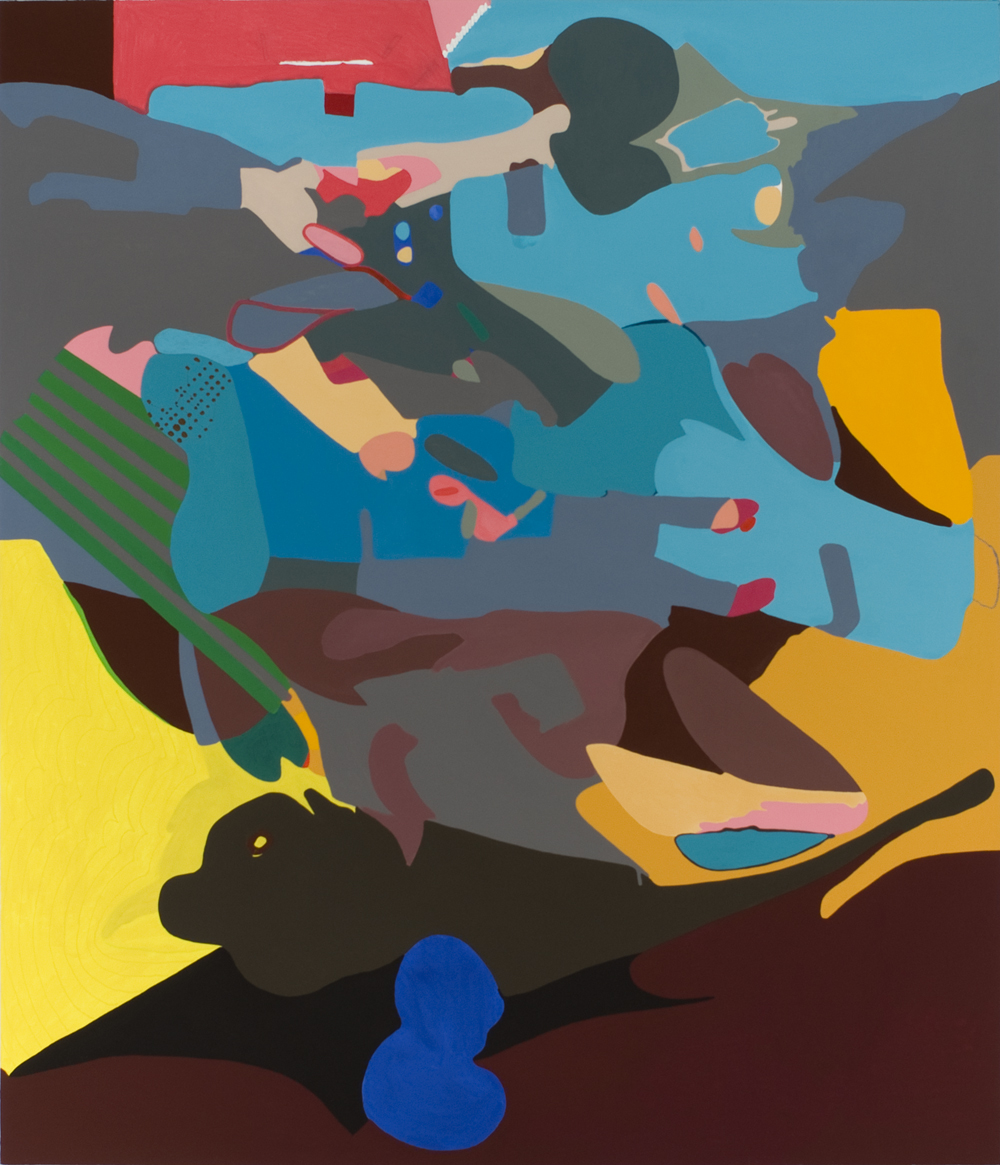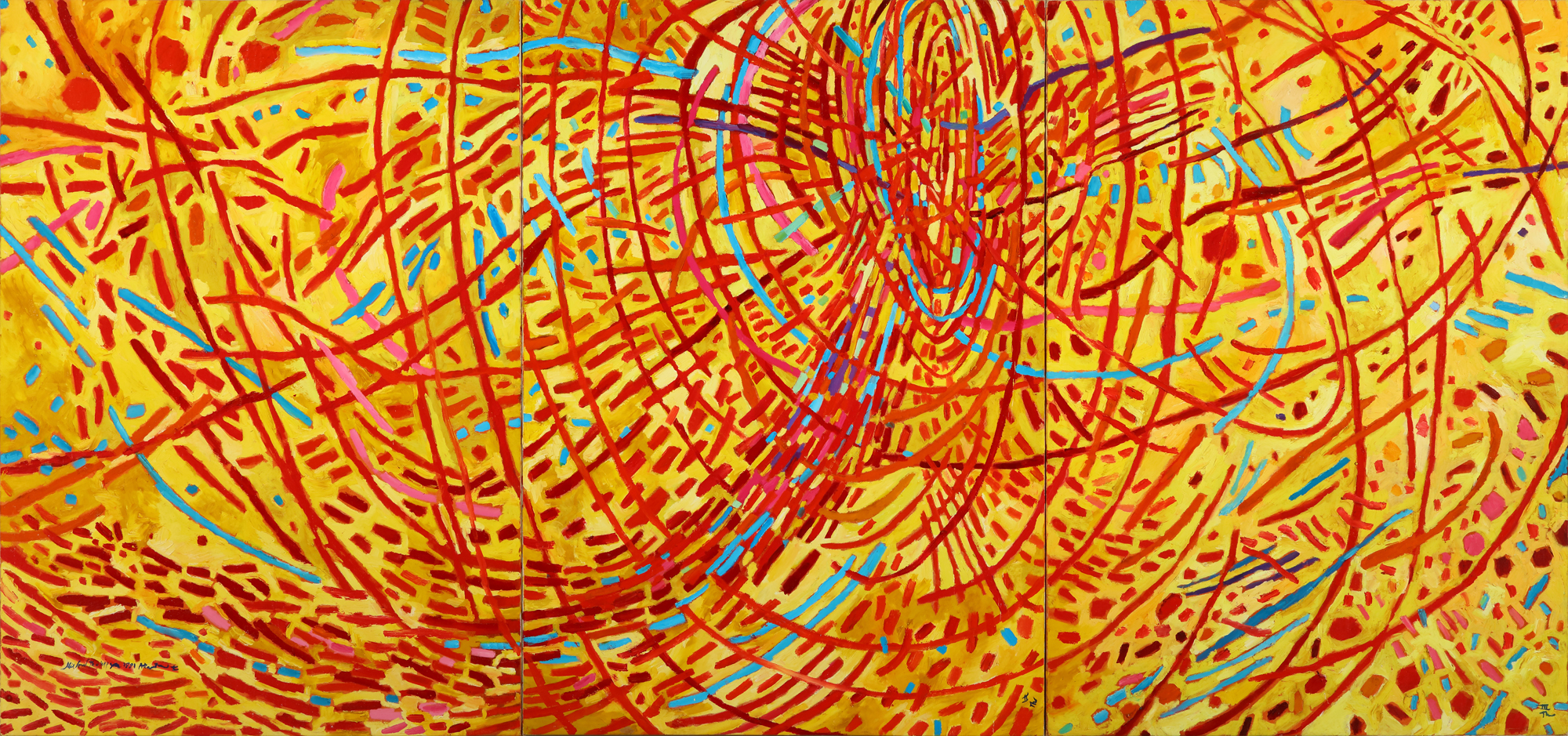Magnetic Fields: Expanding American Abstraction, 1960s to Today, which celebrates “the contributions of black women in the field of abstract art,” is a stunning exhibition that features many powerful examples of abstract art. Walking through the exhibition, I am immediately struck by both the overall scale and the diversity and depth of the selections. Having seen the work of Chakaia Booker many times before, I am happy to experience her work again, especially in this context. El Gato (2001), a rubber-tire and wood sculpture that is utterly textural and profoundly present, simultaneously challenges and captivates the viewer with waves of wild shapes and fluid gestures.

El Gato, 2001 rubber tire and wood , 48 x 42 x 42 inches
Collection of the Kemper Museum of Contemporary Art, Bebe and Crosby Kemper
Collection, Museum purchase, Enid and Crosby Kemper and William T. Kemper
Acquisition Fund, 2004.12 © Chakaia Booker. Photo: E.G. Schempf
On the opposite end of the exhibition stands another fascinating sculpture by Shinique Smith. Bale Variant No. 0012 (2015) combines a number of fabrics and materials forming a column-like bale of moments and memories. Clustered and tied in the shape of a tall square column, it immediately becomes a monument to diversity, while the recent images of displaced peoples, especially in Syria, may make one think of homelessness and flight. When looking at this work I also think of the old cars and station wagons I have seen over the past few decades packed solid with endless belongings that house marginalized families and individuals who have lost their homes. So we have a message in Bale Variant No. 0012 that can be both a celebration and a warning, depending on the viewer.
Mildred Thompson offers Untitled (Wood Picture) (1966), a simple, elegant work that subtly guides the viewer’s attention in and upward as the quietly shifting shapes glide through our awareness. A large painting by Thompson, Magnetic Fields (1991), shows her innate ability to mix complex thoughts and theories with elusive and intuitive gestures.
The oil on canvas titled Solitude (1963) by Mavis Pusey also has a jazzy aspect. The canvas, which looks more like jute or burlap, probably looks that way because the artist did an umber paint rub, probably thinned with stand oil, into the texture of the coarse material. This is important, as the red and brownish black that is applied in distinct, razor-sharp shapes seems to float above the surface by contrast. Candida Alvarez offers an acrylic on canvas titled black cherry pit (2009) that is quite Popish in its abstraction, with its very fluid and active composition. Overall, there is a distinctive push/pull here, a clashing of worlds — or should I say a coalescing of worlds – dominated by an overall positive atmosphere disrupted with a few curious twists and turns.

black cherry pit, 2009 , Acrylic on canvas , 84 x 72 inches
Courtesy of the artist, Chicago, Illinois. © Candida Alvarez. Photo: Tom van Eynde
Betty Blayton’s Consume 12 (1969) is an oil painting on paper mounted on canvas that projects veils of thought or consciousness. The circular shape of the canvas, a tondo, gives this work a more dreamlike orientation, while the way in which the artist works, applying shards of paper loosely across the surface, then painting over them with additional thin washes, has an alluring and mysterious narrative.
Barbara Chase-Riboud’s Malcom X #13 (2008) is meant as a monument to a “transformative individual” in Malcom X. In this tall bronze abstraction we see a soul embellished with silk, wool, linen and synthetic rope – a commanding, albeit twisting form that stands firm against all foes. There are many symbols here, some obvious, others obscure, but the overall feel is a figure that is monk-like in its beliefs and steadfast in its convictions. Racism is Like Rain, Either it’s Raining or it’s Gathering Somewhere, a mixed-media painting by Mary Lovelace O’Neal, has a distinct and ominous storm brewing against a shroud of darkness. Here, the looming giant forms on the right are menacing mangled masses all twisted and in turmoil in mind and body.

Consume #2, 1969 , Oil and paper on canvas, 59 inches in diameter
Courtesy of the Betty Blayton Trust, Boston, Massachusetts. © Betty Blayton Trust.
Photo: E. G. Schempf
Lilian Thomas Burwell’s mysterious Winged Autumn (2007), a wall mounted-sculpture or relief that has obvious references to flight or buoyancy offers a sense of hope. Alma Woodsey Thomas, who is “a pioneer in abstraction and the elder in this exhibition” has in Orion (1973) a freedom of form and space that reminds me of the Earth’s rotation seen when photographing night sky stars in long exposures. By painting the night sky red with what looks like stately tree trunks reflected in calm water, Thomas brings multiple worlds and dimensions together in one profound work.
Additional artists’ works are represented in Magnetic Fields: Expanding American Abstraction, 1960s to Today. The exhibition originated at the Kemper Museum of Contemporary Art in Kansas City, Mo. It ends Aug. 5.
For more information: http://mfastpete.org/exh/magnetic-fields/



